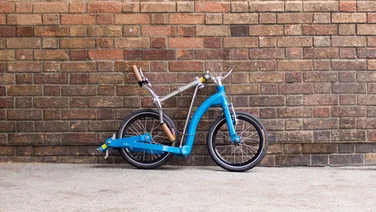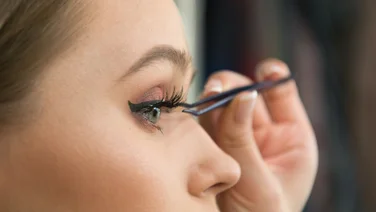To help us provide you with free impartial advice, we may earn a commission if you buy through links on our site. Learn more

Bluetooth speakers started out being as portable as the smartphones we connected to them; convenient, portable and largely inexpensive were the main priorities. However, the way we listen to music has changed and many now want the convenience of a Bluetooth speaker but without compromising on Hi-Fi sound quality.
Bowers & Wilkins excellent T7 Bluetooth speaker was among our favourites in this more premium category. £300 sounds a lot, pardon the pun, but it was the sort of money you wouldnt bat an eyelid paying for a traditional set of loudspeakers or a Hi-Fi. Here we’ve looking at the Riva Turbo X, another of these more premium Bluetooth speakers, which is available for around the same price as the T7.Upon first glance, its not got quite the same classy design of the Bowers & Wilkins T7. While the T7 had an elegant, sculptured cabinet, the Turbo X is decidedly boxier and simply resembles, well, a speaker.
You have a choice of either black or white finishes. The review model I was sent was the latter. I cant help but feel the Riva Turbo branding that runs vertically across its front detracts from what could have otherwise been a more pleasingly minimalist cabinet. The glossy plastic across its top also doesnt particularly scream premium speaker, either.
The Turbo X is by no means poorly constructed, it just doesnt hold a candle to the lavish looks of the T7. What the cabinet lacks in looks, it makes up for with rigidity and bracing. It weighs a not insignificant 1.36kg, which is heavy compared to the T7s 940g.

Neither speaker is really designed for taking out-and-about, but it’s portable enough to easily move from room-to-room,out into the garden, or to throw in the car even for a weekend away, as the situation warrants it. The added weight means the cabinet isnt susceptible to reverberation when the thud of the lower frequencies are blared out.
The top of the speaker is where youll find capacitive touch controls. These are individually backlit with a blue light below each button and a proximity sensor activates them. The proximity sensor only kicks in when your hands are extremely close to the touch buttons, however, and the buttons remain permanently illuminated to indicate when certain modes are activated (see below), so the proximity sensors usefulness is somewhat negated. Like the glossy finish, the illuminated buttons are at odds with the premium price.

Theres also a companion app for iOS and Android if you dont want to keep reaching for the speaker. The app is rather barebones, with just volume adjustments and the ability to disable the voice prompts and cheesy sound effects.
The Turbo X has two distinct modes you can enable either from the speaker or the app; Surround mode and the Turbo mode that gives the speaker its name. The former attempts to widen the soundstage for when youre using the Turbo X to watch films or play games, rather than for use when listening to music. The effect isnt particularly prominent, however. Dialogue feels a little more central, as though there was a centre channel, but the width doesnt seem drastically different. If anything, it at times feels narrower but more focused.
Turbo mode, on the other hand, is all about a boost in volume output. In what can only be a nod to Spinal Tap, Turbo mode literally lets you take the volume up to 11 and a revving engine sound tells you the mode has been turned on (you can, at least, disable this through the app). This lets you increase the volume output up to 100dB.
The Turbo X supports the less-lossy Bluetooth aptX codec, which is what I would expect from a speaker as expensive as this. As well as Bluetooth you can also connect a wired source through the 3.5mm auxiliary connection on the rear. A 3.5mm to 3.5mm cable and a 3.5mm to phono RCA connection are included, which is a nice touch.
The latter is particularly useful as youre actually able to use the Turbo X in phono mode. This means you could connect it to an audio source, such as a turntable, that would otherwise require a pre-amp. You just need to connect it through the auxiliary connection and then hold both volume buttons for three seconds. Theres also a USB port that you can use to charge a smartphone or tablet, and Micro USB port thats only used for firmware upgrades.
A button for activating the battery is also present. If you want to use the speaker away from the mains, youll need to press the button in. Similarly, if you want to charge the battery when plugged into the mains, youll also need to remember to have it plugged in. Otherwise, the speaker will be powered from the mains without actually charging the battery. Its an inconvenient thing to have to remember. A small battery gauge tells you how much charge remains.

Battery life is at least very good. Its rated for around 26 hours when listening at moderate volumes, which compares very favourably to the Bowers & Wilkins T7s 18-hour battery. Have the speaker playing constantly in Turbo mode and you can expect this number to drop to single digits, however.
The cabinet is splash resistant, save for the exposed ports on the back. Thats why a rubber port cover is included, which attaches to the base of the speaker when its not in use. However, annoyingly, the rubber cover never really attached to the ports on the back completely flush and kept coming loose. This leaves me slightly dubious as to how well it would actually live up to its splash resistant claim.
Sound quality
For a premium-priced Bluetooth speaker, the sound quality is as good as you would expect. The larger than average cabinet has allowed Riva to pack in an impressive amount of drivers. There are three 60mm full ranger drivers, supported by four dual piston bass radiators for the lower frequencies.
Theres plenty of rich, warm tones from the bass. The mids and trebles are well controlled. Theres enough detail that they arent masked by the lower frequencies, with a pleasant amount of separation. The mids and trebles arent quite as crisp or delicate as the Bowers & Wilkins T7, but the crispness is a recurring theme of Bowers & Wilkins signature sound.
I was glad to hear my more difficult test tracks didnt cause any distortion in the lower frequencies, and more impressively this remained the case when the speaker was turned up to its maximum Turbo volume. The robustness of the cabinet really comes into its own here.

The Riva Turbo X and the Bowers & Wilkins T7 will please slightly different tastes. The T7 emphasises its treble slightly more, for a slightly more critical sound, whereas the Turbo X has a little more energy in the low-end.
There’s a microphone built-in, so you can use it for hands-free conference calls. Echo and noise cancelling is included, which makes the Turbo X one of the better Bluetooth speakers I’ve tested where it comes to phone calls.
Conclusion
Theres little to complain about when it comes to the sound quality and functionality of the Turbo X. It sounds great, reaches incredible volume, is well constructed and has useful extras like the phono output and USB charging. The only area I wasnt a fan of was its general design. The capacitive buttons and glossy plastic across its top, in particular, let the overall feel down, so when its put next to the supremely classy Bowers & Wilkins T7 it comes up short.
Neither speakers are quite perfect but they each have their pros and cons making separating them more down to personal preference. If youre looking to buy a premium Bluetooth speaker, theyre both good choices.






